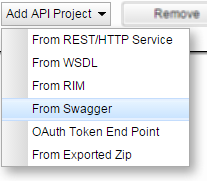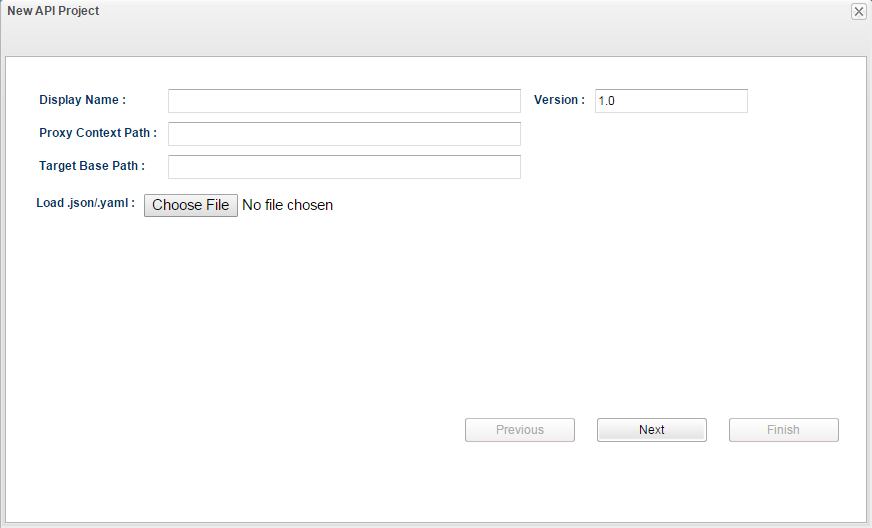The files describing the RESTful API in accordance with the Swagger specification are represented as JSON objects and conform to the JSON standards. YAML, being a superset of JSON, can be used as well to represent a Swagger specification file.
Swagger projects are used to create APIs from an Swagger file format.
Adding the Project

Figure 1: Navigating to create project from RIM file
Providing Basic Attributes
Provide values for the properties in the New API Project dialog box.

Figure 2: Swagger Project properties
Property | Description |
|---|---|
| Display Name | A name to act as Project ID to identify the Swagger project. |
| Version | Revision number of the project, for example, 1.0 for a project being newly added and 1.1 or 2.0 for the next revision. |
| Proxy Context Path | A text used to combine with the version number to act as an identifier to map with a particular deployed project. The proxy resolves context path mappings prior to applying any matching policies (explained in subsequent topics). |
| Target Base Path | Target server URL where the app needs to use the service. |
| Load .json/.yaml | Click Choose File button to browse and choose the Swagger file with .json or .yaml extension. |